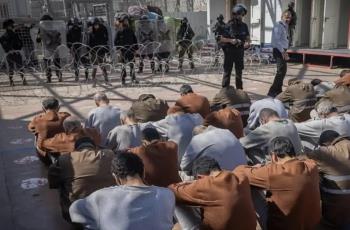A researcher from the United States, commenting on retaliatory strikes carried out by the US against targets in Iraq and Syria, stated that these attacks haven't resulted in a notable shift in the region and won't change Iran's strategic calculations.
In a recent analysis on the Foreign Policy website, Daniel Byman, a senior researcher at the Center for Strategic and International Studies, and a professor at Georgetown University, outlined the objectives behind the Biden administration's strikes in Iraq and Syria. The primary aim is dual-fold: firstly, to halt attacks by resistance forces targeting American interests, and secondly, respond to the killing of American personnel.
Furthermore, Joe Biden aims to reassure Americans that he will not passively endure invasions from other nations, while simultaneously striving to prevent escalating tensions that could intensify into broader conflict in the Middle East.
Balancing these objectives poses a significant challenge due to the region's volatile political landscape and the complexities of engaging systematically with Iran or the resistance forces.
The US attacks are unlikely to bring about a significant change in the regional situation. The limited scale of these attacks, even if they continue for several days, will not deliver a crippling blow to Iran that alters its calculations.
Earlier, the Central Command of the United States in the region known as CENTCOM issued a statement: At 4:00 PM Eastern Standard Time (EST) on February 2nd, CENTCOM forces conducted airstrikes in Iraq and Syria targeting the Quds Force of the Islamic Revolutionary Guard Corps of Iran and affiliated resistance forces.
According to Qatar's Al Jazeera network, informed sources reported that neither the Revolutionary Guards nor the Quds Force had any bases in the areas targeted by the United States.
CENTCOM stated that US military forces targeted over 85 locations with multiple aircraft, including long-range bombers that flew from the United States.
US officials confirmed that US Air Force aircraft, including B-1B bombers, struck three targets in Iraq and four targets in Syria using 125 precision-guided munitions, conducting the missile barrage for over 30 minutes.
CENTCOM also asserted that over 125 precision-guided munitions (bombs) were utilized in these airstrikes, aimed at command-and-control centers, headquarters, intelligence facilities, as well as rocket and missile sites, drone storage depots, and logistical installations (including supply chain and munitions storage) of the resistance forces. These airstrikes followed a nocturnal drone attack on January 28, 2024, targeting a small American outpost along the border between Syria and Jordan, which led to the deaths of three US soldiers and numerous injuries.
In the course of the US assault on the Al-Qaim and Akashat regions in western Iraq, three individuals lost their lives, and 11 others sustained injuries. Furthermore, the US strike in eastern Syria, including the cities of Al Mayadeen and Al Bukamal, resulted in 10 fatalities and 18 injuries.



























